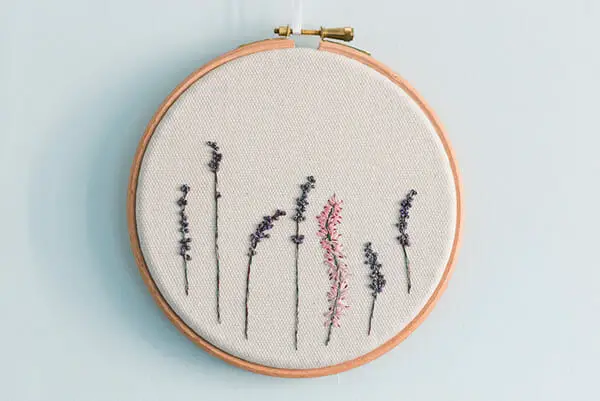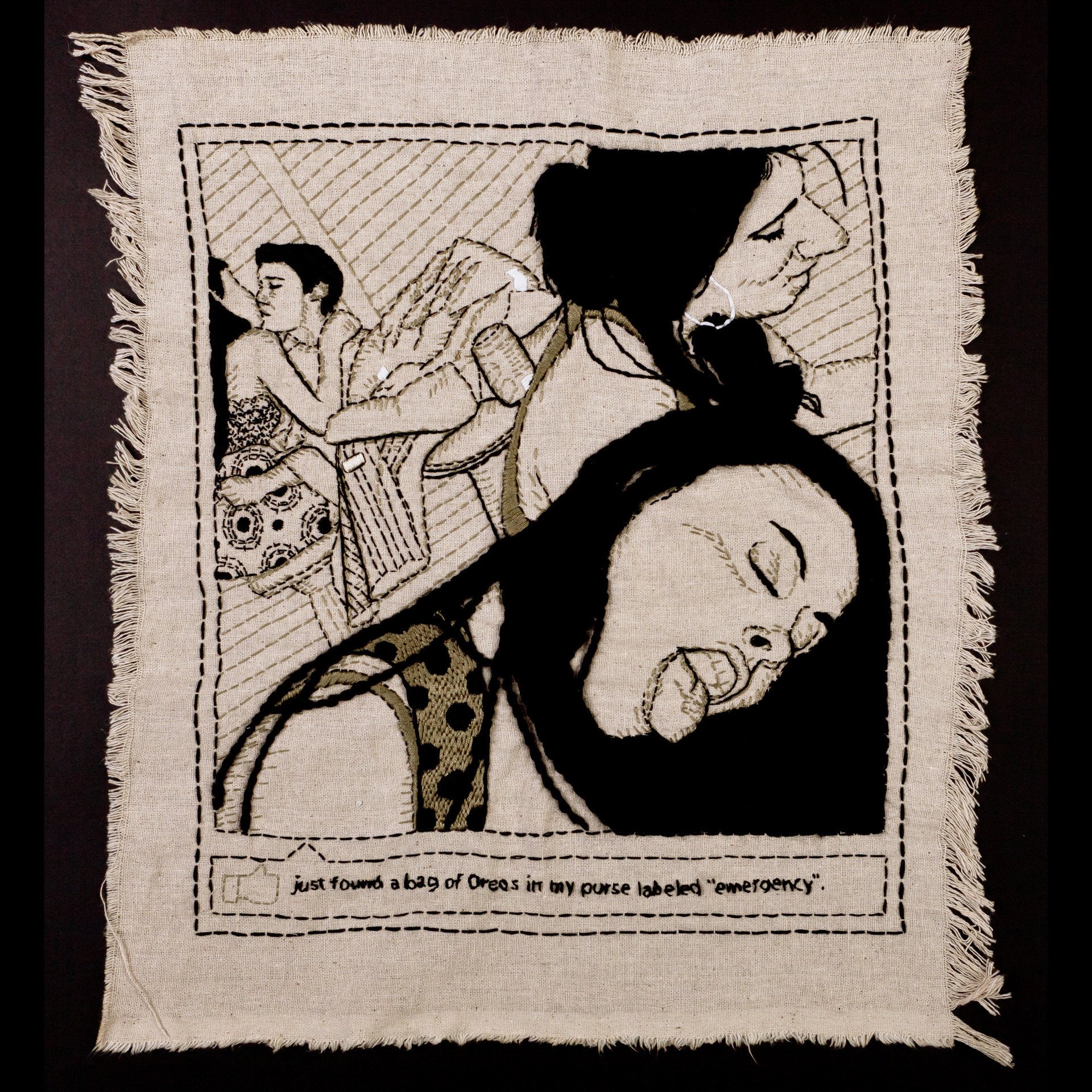Every year, Hand & Lock organizes a competition for the prestigious Prize for Embroidery to promote the use of hand embroidery and to discover emerging embroidery talent. The 2017 brief invited entrants to ‘celebrate, let go, to let loose and indulge in childlike freedom, to celebrate history, global culture, sense of place, sense of identity, and to celebrate embroidery and life.’
London’s Bishopsgate Institute displayed entries from 32 finalists and hosted the final judging of the 2017 Hand & Lock Prize for Embroidery.
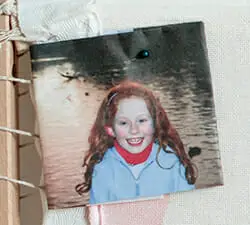
Today we’ll meet the third-place winner in the Fashion Open Category.
Name: Charis Kibble
Location: West Midlands
Website: www.charisesther.com
The Competition
Describe your Hand & Lock entry:
My Hand & Lock entry is a hand stitched portrait of myself, based off a childhood photo. I created my own stitch for this piece and worked on 25 count linen with 2/3 threads in my needle at any one time.
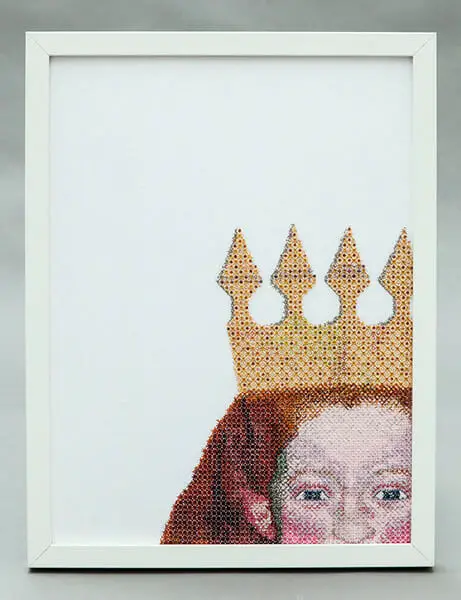
What made you want to enter this competition?
I have had the idea for stitching portraits for a while now, however I have always found it hard to settle down on a personal project when I have other deadlines to see to. When I saw the brief I knew this would be a perfect opportunity to push my ideas and to prioritise my own work. I work well with deadlines so I knew that if I got through the first round of the competition, the deadline would motivate me to see my idea through to completion.
What motivated your choice for your entry?
Firstly, I wanted to create a piece that celebrated childhood. I have been inspired by my parents, by the way they have supported me growing up and the encouragement they’ve given me. I wanted my piece to depict that selfless support, whilst also sending a message encouraging and reminding others that all children deserve to be treated with love.
Secondly I have been following the work of Cayce Zavaglia. She is an incredible embroidery portrait artist. I’m always in awe at her work, her pieces are so detailed and capture emotion so well. Her stitches mimic paint strokes. I wanted to have a go at creating that emotion in my own work.
Are there any secrets you can now reveal about your entry?
There aren’t any secrets as such, but you might be interested to know that this was my first ever completed portrait. It took over 100 hours to complete and I purposely avoided stitching any teeth, as it seemed too much of a challenge for my first attempt.
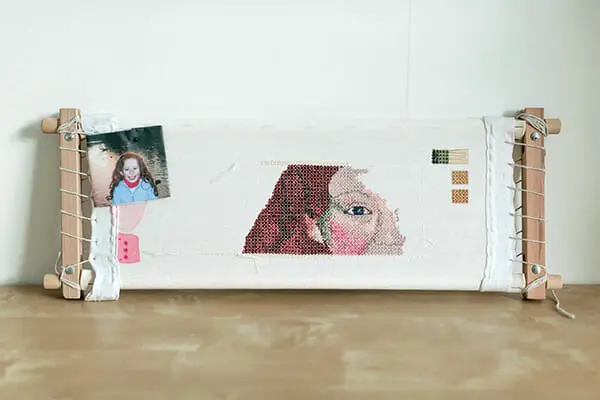
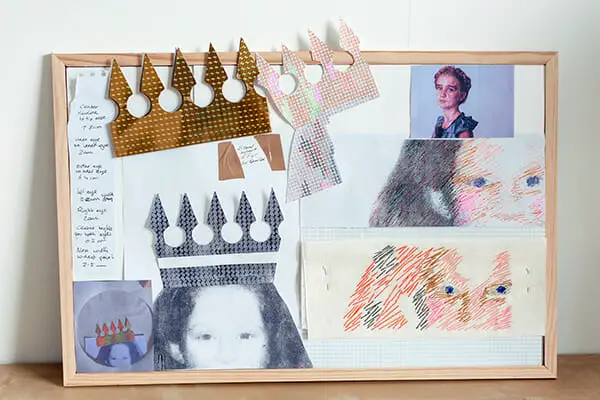
Past
When and how did you first learn embroidery, sewing, etc., and what impression did it make on you?
I learnt how to sew at the Royal School of Needlework. I started the hand embroidery degree there in 2012. I hadn’t initially set out to be an embroiderer, it literally came about after a google search of ‘textile courses’. But when I found it, I loved the idea of learning something really unique, and after an open day, I decided to give it a go. It was a bit of a risk as I only really had very basic hand stitching experience but I loved it, and as they say, the rest is history. What’s interesting is I’ve often struggled with drawing. I’ve felt that I could never accurately express my ideas using pencils and paper; however, once I learnt how to sew, it all came so much more naturally to me.
What was your first embroidery, costume, or textile project?
I did the odd sewing project growing up through school, and I took textiles as one of my A levels. However I worked on my fist professional embroidery project in 2013. I had the opportunity to work with the Royal School of Needlework Studio on a project to design and make a lectern fall for a Church in Felton. I learnt so much from this, and I am very grateful for the different opportunities I have had over the years working with teams of embroiderers on commissions. These projects have really helped my confidence setting up as a solo embroiderer.
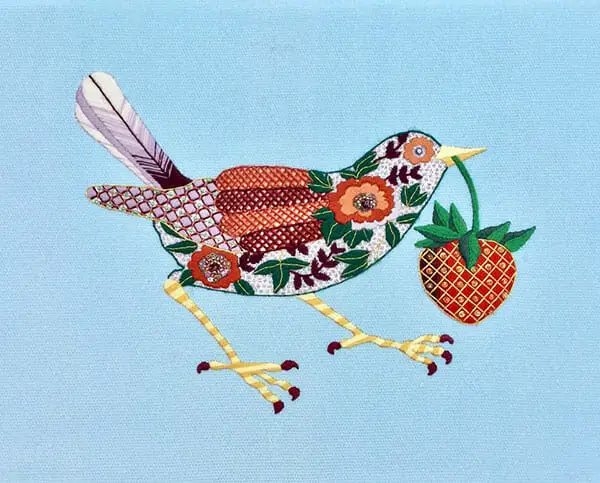
Present
What are you working on right now?
I have just finished off a personalised wedding commission, and I am now working on some new ideas for my website and portfolio. I also work part time for the Nicola Jarvis Studio where I stitch examples of Nicola’s embroidery kit designs.
My job in The Funk Files is to interview “pioneers on the embroidery frontier.” That’s you! What is the embroidery frontier, and what does it mean to be a pioneer here?
I love this question. I have a number of ideas of what it means to be pioneer on the embroidery frontier.
Firstly, if you’re doing this professionally, a pioneer today would be someone who is ensuring they are getting paid for what they do. It might seem like a funny thing to say, but I have noticed a lot in today’s industry, we are constantly being told that we need to get experience until we can justify being paid a fair wage for what we do. Embroidery is a technical skill, and I would love to see more embroiderers finding it easy to earn a living wage off of what they do.
Secondly, I’m very passionate about seeing the textile industry become less wasteful, and more ethical and sustainable. It’s so easy to think that the impact you have in your own freelance business doesn’t really make a difference to the wider industry. However I would say the opposite. We all need to be taking responsibility for our actions, including how and where we source our materials and the way we build our own businesses.
And finally, an embroidery pioneer would be someone who takes risks. I don’t believe there is such a thing as an impossible embroidery idea. There is so much you can do with embroidery; never limit yourself to what you know, or have been taught. I guarantee you will grow in skill and in confidence when you push your ideas out of your comfort zone.
Where else can we see your work?
As most of my work at the moment is commission based the best place to see it is on Instagram or on Facebook.
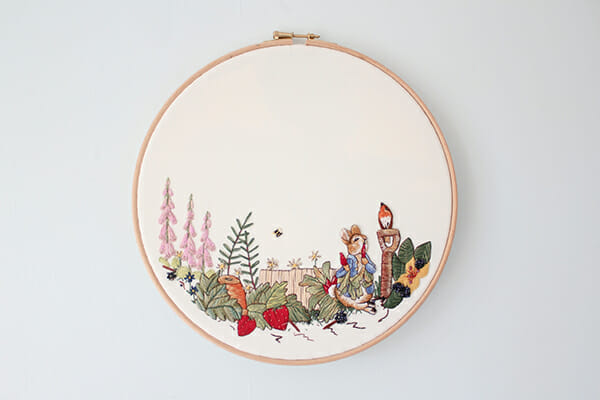
Future
What projects are on the horizon for you?
I have just joined a creative business group to help me grow as a freelance embroiderer, so I will be putting a lot of time in the next few months into planning, updating my website and goal setting. This will hopefully include working on some new projects for my portfolio and potentially a few designs of my own to sell, which is actually a first for me.
Describe your dream commission. What and for whom is it?
Oh, I’d absolutely love to stitch something for the Queen! I’m a big fan. Maybe I could do her portrait?
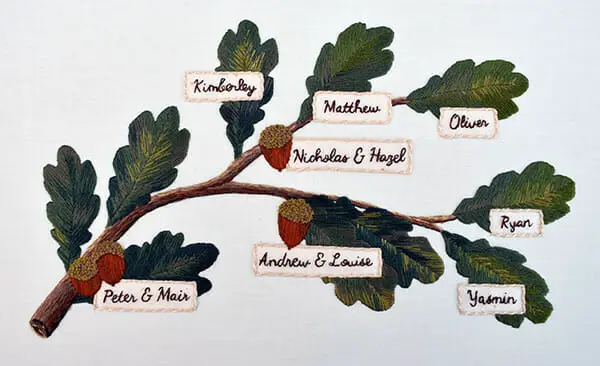
Tip
What advice would you offer someone looking to expand his/her embroidery frontiers?
1) Get inspired and take some classes. There is so much you can do with stitch; the world is your oyster. If you’re struggling for ideas, take a trip out to an art gallery or a beautiful place and see what inspires you. Or book into an embroidery class, being taught new things always gets my brain ticking with new ideas.
2) Create a longer time table. When I started working on commissions, I was constantly underestimating how long things would take. It’s really important when you work on something so labour intensive to give yourself enough time; otherwise, you could end up rushing your work, which could compromise the quality. A good rule of thumb for people who struggle with this is to create an estimate for how long you think a job will take and then multiply your estimate by three. This should hopefully give you enough time to complete all your work and will hopefully give you a more realistic idea next time just how long the stitching will take.
3) Practice, it really does pay off. It does what it says on the tin. If it helps, create a design with all the stitches you’d like to master, then once you’ve finished you’ll have a beautiful design you can display.
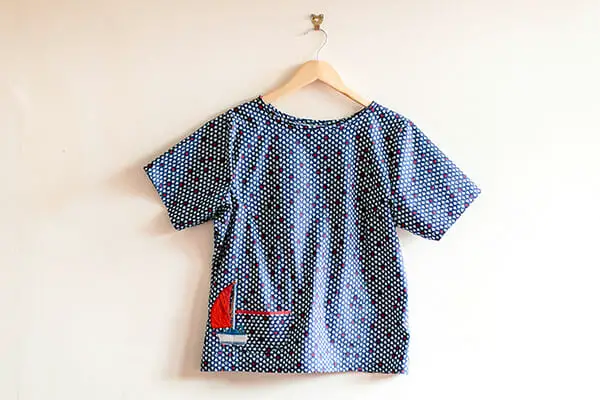
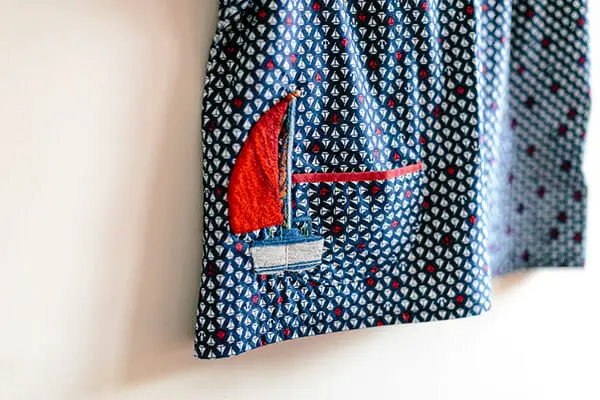
Rapid-fire Round: (Don’t think too hard about these.)
You can work with just one color for the next three years. What color do you choose? Blue. Blue is my go-to colour of choice for most things.
What stitchable motif would you choose to represent you and your life? Hmm I’m not sure, maybe the cartwheeling emoji, it’s my favourite…
What is a sport or activity you haven’t tried but would like to? My husband recently went and played bubble football. Which is football where everyone wears zorb balls over their head and chests. It looked hilarious, I’d love to have a go.
You’re creating an accessory for an animal. What is the animal, and what do you create? An embroidered dog coat would be very cute.
You must include something edible in your next design. What do you use, and how do you incorporate it? Candy necklace beads all the way. Though I’d probably eat them before I’d get round to using them.
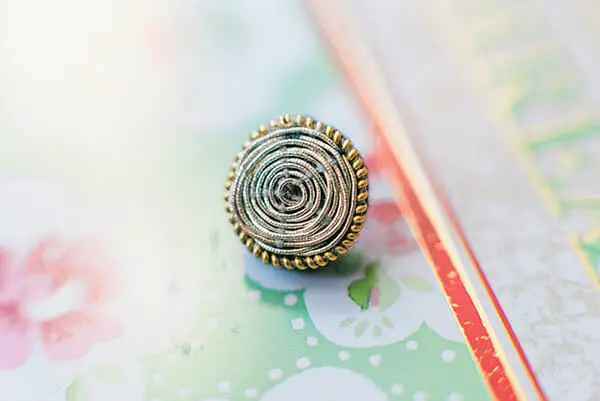
If you were not an artist, what would you be? Oh, I don’t know. I’ve done a fair bit of fundraising over the past few years which I’ve really enjoyed. So a fundraiser…if that can be a job.
An outing you’ve taken recently and enjoyed: I just got back from a wedding in Wales on the Gower which was beautiful, and sunny all day!
You must turn a book into a work of Textile art. What book do you choose, and what do you make? Hmmm, that’s hard because I rarely read…. Probably a children’s picture book. I’d get all the pages printed onto fabric and make a dress out of it.
A place you’d like to visit: I’d love to visit South Korea. It looks stunning.
We’re hosting a show that combines Textile art with performance art. Describe your piece for the show. I’ve had in the past the idea to create an embroidered skirt for a ballet. I’m sure you could work the stitches and fabric with the stage lighting to create something quite beautiful.
